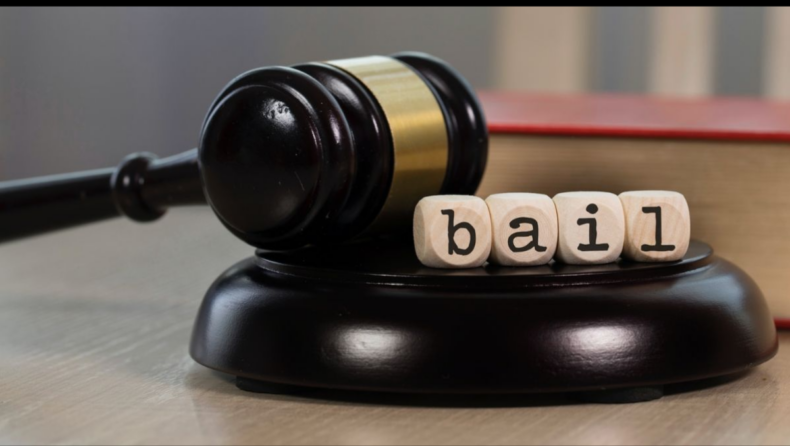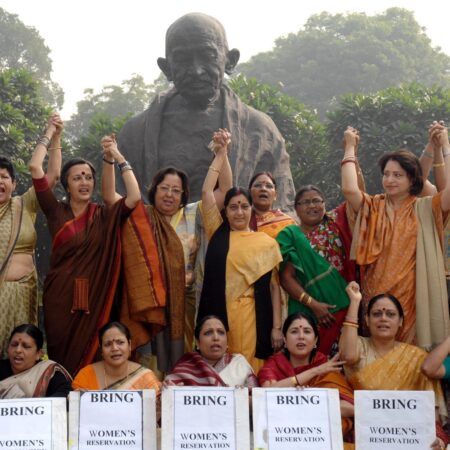In a historic decision, the Supreme Court emphasised the significance of the “bail over jail” principle and imposed a number of rules to avoid needless arrest and remand. In the Satender Kumar Antil v. Central Bureau of Investigation (CBI) case, Justices Sanjay Kishan Kaul and MM Sundersh said that Indian prisons are too full of people who are still being tried.
There are numerous inmates in India who have not yet received a conviction. According to statistics, more than two-thirds of those incarcerated are doing so while awaiting trial. Even though they are facing charges that could result in a sentence of seven years or less in jail, the majority of these inmates may not even have needed to be arrested.
They are not only poor and can’t read or write, but also women. “So, many of them are passing on a culture of offense,” the judge said at the beginning of the ruling.

The Court also said that most of the problem is caused by arrests that aren’t necessary and are done against Sections 41 and 41A of the CrPC and the instructions in the Arnesh Kumar judgement.
“…it shows that the investigating agency is still stuck in the way of thinking of colonial India, even though arrest is cruel, limits freedom, and shouldn’t be used unless it’s absolutely necessary.” There can never be the idea that a democracy is a police state because the two ideas are completely different. “The judgement stated that
TRIAL DEFINITION
The Code does not explain what the word “trial” means. For the purpose of expanding bail to include the stage of investigation and what comes after, this word needs to have a wider meaning.
The difference between these two stages is extremely crucial. In the first stage, an arrest and police custody may be necessary for a comprehensive investigation. In the second stage, a trial is what matters.
Bail definition
The code rarely defines “bail.” A court, police, or investigating agency releases an accused individual. A suspect must follow these principles before trial, but anyone can obstruct justice.
Wharton’s Law Lexicon, 14th Ed. defines bail as: “to set free a person who has been arrested or jailed in exchange for a promise to show up at a certain time and place.” Bail is given to the people who promise to make sure he shows up when he’s supposed to so that he doesn’t end up back in jail. The judgement stated that
“Bail is the rule.”
The Court has repeatedly affirmed that bail is the rule and incarceration is the exception. Article 21’s linchpin. Presuming innocence unless proven guilty is another criminal justice premise.
The Supreme Court of India (2018) held that the object of bail is to secure the attendance of the accused at the trial. In K.N. Joglekar v. Emperor (1931), it was observed that there was no hard-and-fast rule and no inflexible principle governing the exercise of discretion. An accused person who enjoys freedom is in a much better position to look after his case and to properly defend himself than if he were in custody.
To prove innocence, an innocent person must risk his freedom. The question of bail involves liberty, justice, public safety, and the public money, all of which depend on a developed bail jurisprudence for a socially aware judicial procedure.
Bail cannot be granted inexorably. Each case’s facts and circumstances will guide the judge’s bail decision. Gurcharan Singh v. State (UT of Delhi) (1978). Article 21 of the Constitution’s Fundamental Rights Chapter is the Ark. It’s about life and liberty for Indians and others. Post-Maneka Gandhi v Union of India, it has many substantive and procedural rights (1978). Judgement:
PRESUMPTION OF INNOCENCE
A legal fiction says a suspect is innocent. The accusers must show guilt. This agency must convince the court that the arrest was warranted and that bail shouldn’t be hiked. A person is deemed innocent until proven guilty under Article 14(2) of the 1966 International Covenant on Civil and Political Rights and Article 11 of the Universal Declaration of Human Rights.
In Corey Lee James Myers v. Her Majesty the Queen, 2019 SCC 18, the Supreme Court of Canada ruled that bail must be based on legal parameters. It gives the Court enough power to examine bail expansion, including excessive delay. Judgement:
Court-issued instructions to the government:
We want to give you some guidelines. These guidelines are intended for both the investigators and the courts. Therefore, we believe it’s a good idea to provide the following instructions, which the States may adjust (State amendments).
The investigating agencies and officers are duty-bound to comply with the mandate of Section 41 and 41A of the CrPC. Any dereliction on their part has to be brought to the notice of the higher authorities by a court. The Indian government may introduce a bail act to simplify bail. Siddharth judgement must be strictly followed (supra). High courts must identify undertrial prisoners who can’t meet bail requirements. After that, Section 440 of the Code will facilitate their release. Judgement:
Case-Satender Kumar Antil Vs Central Bureau of Investigation (CBI) 2022













